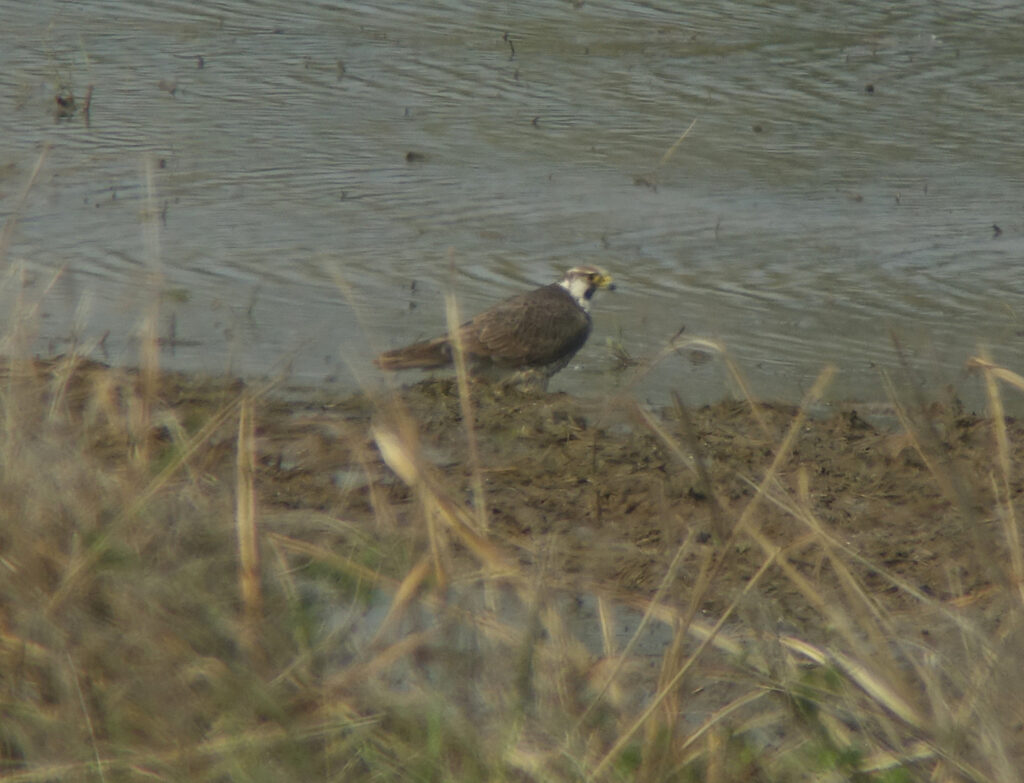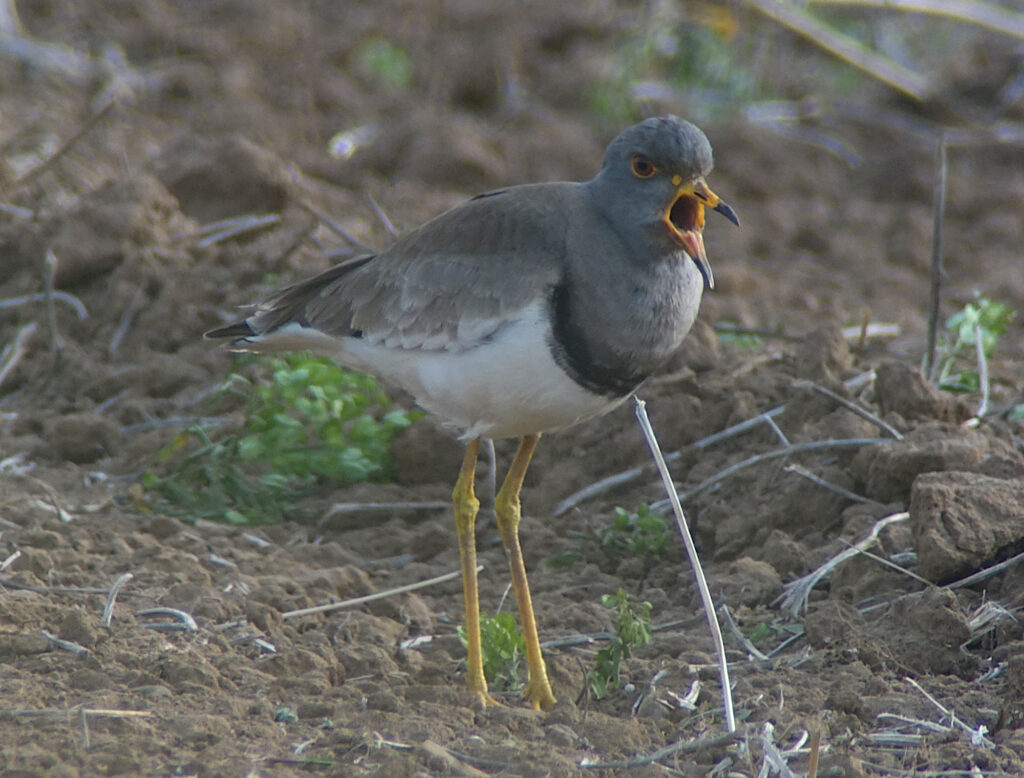Bird News from Nial Moores (with Subhojit Chakladar for part of 26th-28th).
In addition to plentiful of enjoyable encounters with Korean breeding species (some of which like Black-faced Spoonbill, Chinese Egret, Tiger Shrike and Forest Wagtail breed on the island itself; others like Dusky Warbler and Asian Brown Flycatcher which do not), highlights in late May included Korea’s second record of Silver-throated Tit Aegithalos glaucogularis (Baegnyeong’s / Baekryeong’s 380th species since 2013), three Black-winged Cuckooshrike (most years five or fewer records nationwide), an extremely briefly heard Large Hawk-cuckoo, and a presumed national high day count of ten Baikal Bush Warbler.






On the flip side, numbers of many usually numerous species (e.g., hirundines and swifts) and of a few typically uncommon migrants (e.g., Gray’s Grasshopper Warbler and small bitterns) remained exceptionally low or absent throughout. In addition, ongoing construction (e.g. of a new port – resulting in the complete reclamation of the last remaining tidal flat) combined with dry north-easterlies for several days in a row and near drought conditions (broken only by some very light rain on 2 or 3 dates) made finding some species much more challenging than back in 2013, the first spring of survey. As a result probably fewer than 145 species were logged in total between May 19th and 31st, compared with 183 species logged between May 16th and 31st in 2013 – even though some of the best birding areas had yet to be found at that time.
Selected species of note or interest in late May 2022 included:
On May 19th, an odd (presumed) Peregrine Falcon, with extensive white on the head (including on the forehead up to the centre of the crown) and rather brown-toned plumage, and two Ruddy-breasted Crake in Jinchon (full eBird Checklist is here)

On 20th, best were a single Hume’s Warbler and a modest peak of Brown Shrike, with 16 in the Dumujin valley. Full eBird Checklist here.

On 21st, in dense fog the first of this year’s three Black-winged Cuckooshrike was found at Junghwadong. Full eBird Checklist here.
On 22nd, highlights included some modest raptor movement, with at least 20 Crested Honey Buzzard and 25 Grey-faced Buzzard over Jinchon, and a peak of three Japanese Leaf Warbler along with small numbers of Arctic (35) and Kamchatka Leaf Warblers (15), and at least six Yellow-breasted Bunting still in Jinchon (full eBird checklist here)

On 23rd, the first of half-a-dozen “Barking Cuckoos” was heard (https://ebird.org/checklist/S111053969)
On 24th, the first of three Fairy Pitta was heard singing in Junghwadong (https://ebird.org/checklist/S111146030), with the others heard at night in Jinchon on 27th and 30th.
On 25th, a long-awaited rain front made slow progress across the Yellow Sea (bringing Mr Subhojit Chakladar with it!)

On 26th, following the passage of the weather system and decent westerlies, single Red Collared Dove, Large Hawk-cuckoo and the second Black-winged Cuckooshrike of the spring were in Dumujin, and the first two Baikal Bush Warbler of 2022 were heard in the west of the island (full eBird Checklist here ).


The 27th was a good day, starting with a White-shouldered and 2-4 Red-billed Starling, followed soon after by the third Black-winged Cuckooshrike (by SC only, in Junghwadong) and this spring’s peak counts of several species, including in the west at least 20 Brown Shrike and 15 Thick-billed Warblers and 45 Black-browed Warblers, the only 2 Middendorff’s Grasshopper Warblers (one in song, one glimpsed and presumed to be this species) and at least 10 Baikal Bush Warbler, along with good numbers of leaf warblers, with e.g. 90 Arctic Warbler heard singing in two parts of the west of the island (full morning eBird Checklist here). In the afternoon in Jinchon high counts included 15 Common Cuckoo and 30 Dark-sided Flycatcher (eBird Checklist here), with a Fairy Pitta heard in song at night, apparently moving rapidly north, at 11:14 PM.




On 28th, the only species of note was an Amur Falcon.

On 29th, a Grey-headed lapwing was heard in flight at night over Jinchon, and two Black-capped Kingfishers were logged – the personal first of the spring here (in earlier years 2-3 pairs nested on the island) – along with the personal first Grey Nightjar of the year. Full eBird Checklist here.

On 30th, two Silver-throated Bushtit were found in amongst a flock of 10 or so Long-tailed Tit, made up of one white-headed adult, one or more adult magnus, one or more adult intergrades and at least three juveniles, one of which repeatedly tried to beg food (unsuccessfully when I was watching) off one of the Silver-throats. Silver-throated Tits are known to have “helpers”, supporting breeding pairs. Is this what happened here on Baekryeong, with Silver-throats helping feed the very closely-related Long-tailed Tits? The first national record of Silver-throated Tit was in March 2022 on Socheong Island some 25-30km to the south, and it seems reasonable to assume that the Baekryeong birds likely arrived at more or less the same time, to over-summer on the island. Full eBird Checklist here.




On 31st, in my final morning of survey this May, a Grey-headed Lapwing (most likely the one heard during the early hours of 29th, though up to three were claimed on the island by other observers) was in Jinchon, along with unseasonal single Chinese Penduline Tit (a species which has nested on the island), Chestnut-cheeked Starling and Hawfinch. Full eBird Checklist here.



